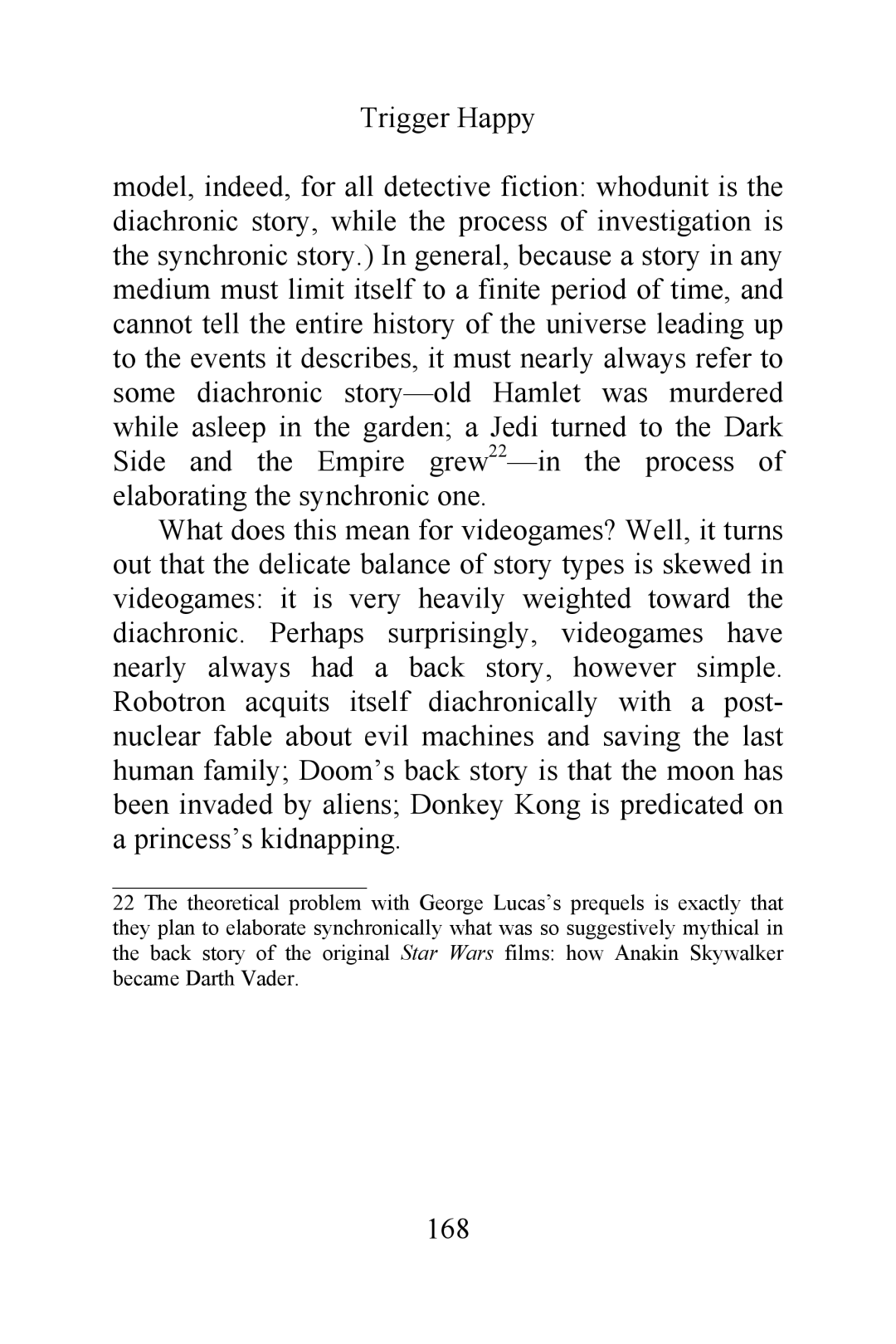Trigger Happy
model, indeed, for all detective fiction: whodunit is the diachronic story, while the process of investigation is the synchronic story.) In general, because a story in any medium must limit itself to a finite period of time, and cannot tell the entire history of the universe leading up to the events it describes, it must nearly always refer to some diachronic
What does this mean for videogames? Well, it turns out that the delicate balance of story types is skewed in videogames: it is very heavily weighted toward the diachronic. Perhaps surprisingly, videogames have nearly always had a back story, however simple. Robotron acquits itself diachronically with a post- nuclear fable about evil machines and saving the last human family; Doom’s back story is that the moon has been invaded by aliens; Donkey Kong is predicated on a princess’s kidnapping.
_________________
22 The theoretical problem with George Lucas’s prequels is exactly that they plan to elaborate synchronically what was so suggestively mythical in the back story of the original Star Wars films: how Anakin Skywalker became Darth Vader.
